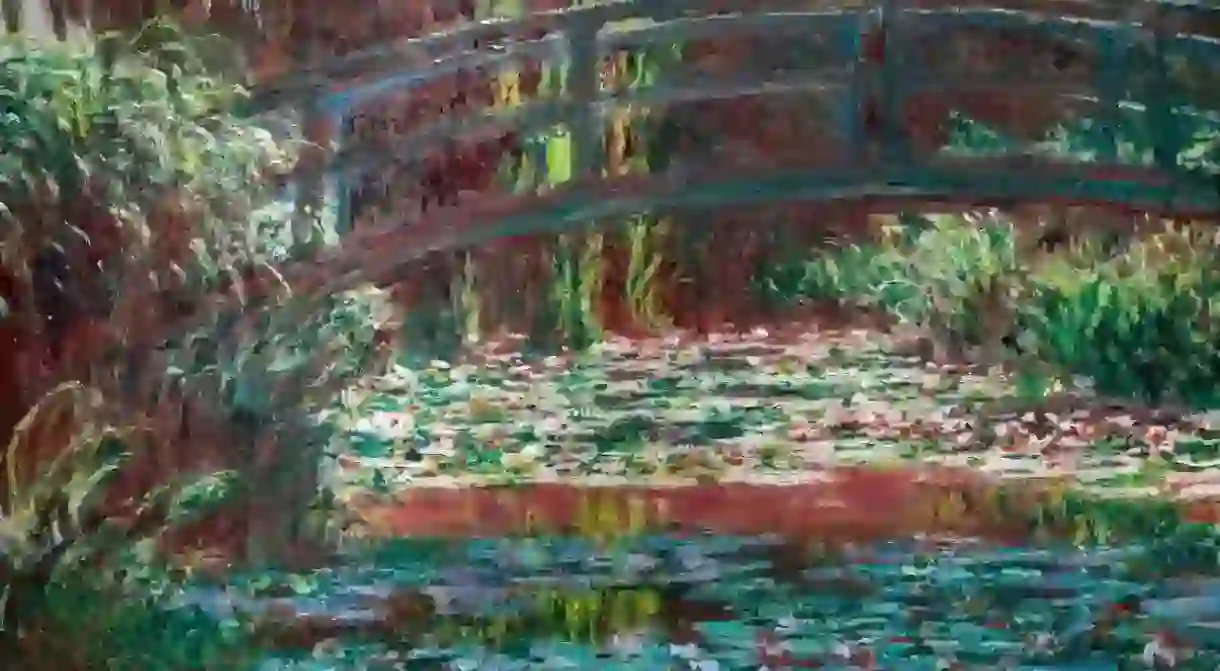Things You Should Know About Claude Monet

Claude Monet’s name is synonymous with the groundbreaking French Impressionist movement of the 19th century. As one of the world’s most prolific painters, Monet’s reputation has remained steadfast for generations. Yet despite his widespread recognition, what do you really know about Monet’s life? In light of the current show ‘Painting the Modern Garden’ at the Royal Academy, consider the aspects of Monet’s life that helped form one of history’s greatest artists.
Monet began drawing caricatures at school
The Impressionist painter began his career in the classroom. It was here that Monet expressed his disinterest in school, preferring to draw sketches and caricatures of his teachers and classmates. During his explorations as a young artist, Monet established a creative reputation in his local town Le Havre, where he would sell his images for small sums.

His friend Eugene Boudin helped him to become a landscape artist
It was in Le Havre that Monet met Eugene Boudin, one of the first landscape artists to paint outside giving him the title The King of the Skies. Boudin noticed the young Monet’s talent and invited him to paint en plein air (outside) with him in Normandy. This encouragement proved paramount to Monet’s development as a landscape artist, where he learnt from Boudin’s desire to capture light in his paintings.
Monet’s close relationship with the Hoschèdès
In 1878, Monet and his family moved into art collector Ernest Hoschèdè’s family house. Hoschèdè was a wealthy patron of the arts, and had a family of his own. Due to the poor health of Monet’s wife Camille, Ernest’s wife Alice often helped him to care for his sons Jean and Michel. This relationship grew after Camille’s death in 1879 and despite Alice’s marital status, she and Monet pursued a relationship. This was consummated in their marriage in 1892, following the death of Ernest that same year.

The influence of Japanese artist Hokusai on Monet’s work
Of great influence to Monet’s development of style was his fascination with Japanese art and prints. He had 231 Japanese woodblocks, Hokusai being pronounced among them. The most significant evidence of ‘La Japonaise’ influence in Monet’s work is his painting of Camille dressed in a kimono. Monet’s interest in Japanese style was echoed by French society at large, which experienced a mini-obsession with the oriental in the 19th century. Monet’s most famous subject, water lilies, is also attributed to his interest in Japanese art.How he came to be known as the father of Impressionism
In 1872 Monet painted Impression, Sunrise. It was displayed in the first Impressionist exhibition in Paris in 1874. Art critic Louis Leroy famously gave the term ‘Impressionism’ to Monet’s work, intending to disparage Monet and his contemporaries clear irreverence for the classical style. Instead of rejecting the term, the contemporary artists embraced it and it soon became the slogan for the new artistic crusade.
The impact photography had on the Impressionist movement
Today Impression, Sunrise is heralded as a watershed moment in art history, despite the critics who initially derided it. Monet’s beginning as the father of Impressionism was met with complaints that his paintings lacked form, were unfinished and ugly. However, his artistic development is argued to have occurred as a result of the development of photography in 1839. The camera’s ability to replicate any subject resulted in disenchantment with realism, encouraging young contemporary artists to develop art further.
Monet’s life before he moved to Giverny
During the Franco-Prussian war (1870-1871) Monet moved to London along with Pissarro and Daubigny. However, he quickly returned to Paris and lived in Argenteuil from 1871 to 1878. It was in 1883 that Monet acquired his renowned property at outside of Paris. It was here that Monet resided for the remainder of his life, and also where his love of water lilies was realized.
The story behind Woman in the Green Dress
Monet had set out to paint a monumental Luncheon on the Grass for the 1866 Paris Salon. Due to time constraints, Monet decided to substitute the work with a painting of his wife Camille entitled Woman in the Green Dress. Although it was slightly unconventional, this painting gave Monet recognition in the Salon. Yet more importantly, it aided his financial woes and was sold for 800 francs, a large sum which the artist had not been familiar with.
The result of multiple rejections from the Paris Salon
In his early years Monet had limited success. During the 1860s the Paris Salon accepted a handful of landscape paintings, however in 1867 Women in the Garden was rejected by the Salon, forcing Monet to seek patronage elsewhere.
The formation of ‘The Anonymous Society of Painters, Sculptors, Printmakers, etc.’
The Anonymous Society of Painters, Sculptors, Printmakers etc was founded in 1874. The initial members included Monet, Degas and Pissarro, amongst others. The men galvanized themselves away from the official annual Paris Salon that saw a jury of artists from the Academie de Beaux-Arts award medals to artists they deemed deserving of recognition. The exhibition showcased the array of styles contemporary artists could convey, highlighting the departure from the traditional style that dominated the Paris Salon in the late 19th century.
Beyond Claude Monet’s status as the father of Impressionism, he experienced a variety of successes and failures throughout his life. His dreamy landscapes stand in the league of the most important paintings in history, demonstrating his genius as one of the world’s greatest painters, and his path to success.
For more about this artist visit our companion article on the life of Claude Monet.
Did you know – Culture Trip now does bookable, small-group trips? Pick from authentic, immersive Epic Trips, compact and action-packed Mini Trips and sparkling, expansive Sailing Trips.













